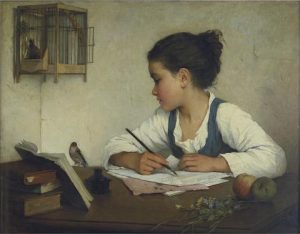Maybe when it comes to the chat bots and art bots and other such creations, we’re asking the wrong questions.
I mean, if a chat bot can pass the bar exam, the question shouldn’t be “can a chat bot practice law” but rather “does the bar exam do a good job of determining whether someone would make a good lawyer.”
Having taken a bar exam, I can assure you it’s primarily a hazing ritual. I’m sure the chat bots do very well on the multistate multiple guess portion of the exam, which requires you to memorize vast amounts of information, much of which is not relevant to actual practice.
My experience with bar exams is out of date, but when I took it, we had to learn all the old common law (based on British law) definitions of criminal behavior. These were no longer in use in Texas (where I took the bar) or in any other state that had adopted a modern penal code.
I bet a chat bot is hell on wheels at stuff like that, but I suspect a bot lawyer would not know what to do in a situation where its client was before a judge for revocation of probation (on a felony drug charge) and the judge, in the middle of ranting at its client, gave it a huge wink.
I’m not even sure how a chat bot would know about the wink, but assuming a bot could see it, I suspect it wouldn’t know it was a signal that the judge wasn’t going to revoke probation.
The time it happened to me, I knew what it meant. In fact, I knew from the moment the judge started ranting that he wasn’t going to send my client to prison. He winked at me because I was a young lawyer and he wasn’t sure I understood yet that he was yelling at my client in lieu of revoking probation.
The real practice of law is about subtleties. I suspect algorithm-driven software fueled by large language models is very useful in plowing through reams of documents and will get better, but it’s going to be crap at the negotiating table or in the courtroom where you have to read people as well as put the right information before them at the right time.

 Jupiter and Saturn, but Voyager 2 continued on to Uranus and Neptune. They’re both now outside the solar system, sending back data about the regions of space they’re exploring.
Jupiter and Saturn, but Voyager 2 continued on to Uranus and Neptune. They’re both now outside the solar system, sending back data about the regions of space they’re exploring. I have rituals in the morning. Getting up is hard enough without making a bit of a routine of it. So there is the shower ritual (with various subsets), then the coffee ritual, and then the email-and-internet ritual. The last mostly involves throwing out a virtual ream of political emails and ads, scanning for the one or two emails that actually should get to me (most of them are things like contacts from the doctor or pharmacy–like the olden days of mail, you rarely get something personal that you should actually, like, read). And then I do my morning web-crawl.
I have rituals in the morning. Getting up is hard enough without making a bit of a routine of it. So there is the shower ritual (with various subsets), then the coffee ritual, and then the email-and-internet ritual. The last mostly involves throwing out a virtual ream of political emails and ads, scanning for the one or two emails that actually should get to me (most of them are things like contacts from the doctor or pharmacy–like the olden days of mail, you rarely get something personal that you should actually, like, read). And then I do my morning web-crawl. screaming, into the world of social media, into getting my first stupidphone, and later into video chatting (during her years of medical school on the other side of the country). Now these technologies are part of my everyday and work life. They’ve saved my sanity during the pandemic.
screaming, into the world of social media, into getting my first stupidphone, and later into video chatting (during her years of medical school on the other side of the country). Now these technologies are part of my everyday and work life. They’ve saved my sanity during the pandemic.